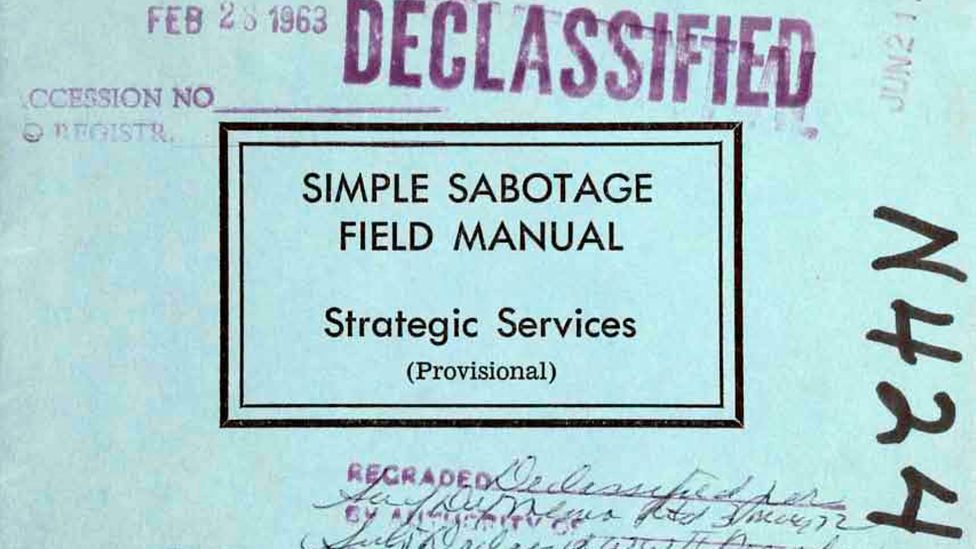You might imagine disguised explosives, wiretaps, bat bombs, or other dramatic inventions when you think of allied espionage. However, declassified documents show that ordinary saboteurs, purposefully clumsy factory workers, annoying train conductors, and bad middle managers helped the United States win World War II. But why did the US publish a spy manual during World War II?
During WWII, the US published a spy manual advising middle managers in enemy territory to sabotage their employers by bringing up irrelevant issues, promoting bad workers, haggling over minor details, and holding unnecessary meetings.
A Job Opening in Espionage.
They created the Simple Sabotage Field Manual, a sort of ultimate un-training manual full of ideas for motivating and inspiring locals to make things difficult for their governments. Selections and adaptations from it were distributed in leaflets, over the radio, and in person when agents met people who appeared to be a good fit for the job. (Source: Atlas Obscura)
A Guide for Sabotaging and Spying
The manual’s introduction promises innumerable simple acts that the ordinary individual citizen-saboteur can perform. Destruction is possible with salt, nails, candles, pebbles, thread, or other materials he might normally be expected to have.
Only the saboteur’s imagination and circumstances limit the potential of these materials. You could use a hairpin to jam a lock, insert a wrench into a fusebox, or sand a lubricated surface. According to the manual, thinking bigger is better. Any military factory worker could quickly slash the tires of an army truck on their way to work. Still, it’s even better to spill a bunch of hair into an assembly-line cauldron, contaminating the rubber meant to outfit an entire fleet.
According to the manual, the second type of simple sabotage requires no tools and causes no physical damage. Instead, it is based on universal opportunities to make faulty decisions, to adopt a non-cooperative attitude, and induce others to follow suit. Like all good maneuvers, this tactic is given a fancy name, the human element.
Citizens should cry and sob hysterically on every occasion, especially when confronted by government clerks. Train conductors can issue two tickets for the same seat on the train so that an interesting argument will result. Most impressively, any audience member can ruin a propaganda film by bringing a bag of moths into the theater and leaving it on the floor of an empty section: Take the bag to the movies with you and leave it on the floor of an empty section. The moths will fly out and climb into the projector beam, obscuring the film with fluttering shadows.
However, this is a thoroughly modern interpretation. The OSS was careful to point out to saboteur recruiters at the time that most people are not naturally prone to making stupid decisions.
Purposeful stupidity is contrary to human nature, they write in a section titled Motivating the Saboteur. Your average recruit frequently requires information and suggestions, incentives, and assurances that there are many saboteurs like him, sanding things that don’t need to be filed, holding meetings that don’t need to be saved and bringing bags of moths to the movies. (Source: Atlas Obscura)
Image from BBC.com
